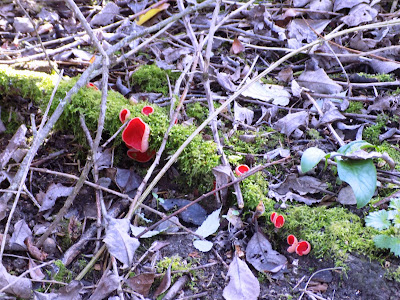The weather has continued to be poor lately, especially on Saturdays which are my main wildlife days. It's certainly been a wet winter!
I've seen the Avon roe deer a few times over the last few weeks, including the doe and fawns I first saw in July.
 |
| Roe Deer July 2017 |
 |
| Roe Deer February 2018 |
It's interesting to be able to see how they've developed in this time. Obviously they have grown a fair bit but you can see that they are still quite a bit smaller than their mother. It's also interesting to note how their coats have changed too. The fauns have lost their spots and all three have changed from their sandy summer colours to their darker winter colour.
I've also saw one of the bucks at the weekend, potentially these fauns father and certainly a relation.
Today I visited Blashford Lakes where I spent most of my visit in the Woodland Hide. It was really busy, both with visitors in the hide and birds on the feeders. There were plenty of the usual suspects such as chaffinches, goldfinches and blue tits.
It was also a good day for siskins as there were a fair few visiting the feeders.
At this time of year siskins start to appear more regularly in gardens and on feeders(1). They tend to resort to feeders when the natural seed stock has reduced and visit feeders more when the natural Sitka Spruce seed crop is low(2).
Every now and then most of the birds would suddenly fly back into the safety of the bushes, likely because there was a potential predator somewhere nearby. I did see one of these potential predators, a great spotted woodpecker.
Like most woodpeckers this species mostly feeds on insects but over the winter has to supplement this with tree seeds(3). They would be unlikely to predate any of the birds present but in the spring they do feed on eggs and fledglings so they are wise to be wary of woodpeckers.It might be that they simply sense that this is a bigger bird and therefore a potential threat.
The highlight though were a few stunning bramblings.
Bramblings are not resident in the UK and instead migrate from the forests of Northern Europe(4). As you can tell from their beaks, they are finches and like other finches mostly feed on seeds. Numbers vary depending on how much food is available but it appears to be a good year for them, as it is for bullfinches and hawfinches.
I also got this very clear photo of a robin whilst walking round the reserve.
Robins seem to be particularly abundant this winter. UK robins are generally non-migrantry but robins do spend the winter in the UK from Northern Europe so it's possible there is a larger influx this winter(5). At this time of year though robins are starting to secure their territories ahead of the breeding season so this could also explain why they are more visible at the moment.
Whilst I didn't spend much time near the lakes themselves today I did spot a few interesting birds:
 |
| Green Sandpiper |
 | ||
Gadwall
|
I was also pleased to spot some fungi amongst the undergrowth, the stunning scarlet elf cap.
Scarlet elf cap is a "saprotrophic" species. In simple terms, this means it digests decaying matter, usually wood in this case, and breaks the composite parts down- proteins into amino acids, lipids into fatty acids and glycerol and starch into simple disaccharides(6). These nutrients are passed through the mycelium, the fungi equivalent of roots, and help the fungus to grow.
That's all for today but I'll be back on Saturday for my look at February's nature news.
1: BTO: Siskin
2: Mckenzie, A.J., Petty, S.J., Toms, M.P. & Furness, R.W. (2007) 'Importance of Sitka Spruce Picea sitchensis seed and garden bird-feeders for Siskins Carduelis spinus and Coal Tits Periparus ater' Bird Study 53: pp. 236-247
4: BirdLife International (2012) IUCN Red List of Threatened Species, Version 2013.2. International Union for Conservation of Nature
6: Clegg, C.J and Mackean, D.G (2006) Advanced Biology: Principles and Applications (2nd ed). Hodder Publishing fig 14.16, pp.296












No comments:
Post a Comment